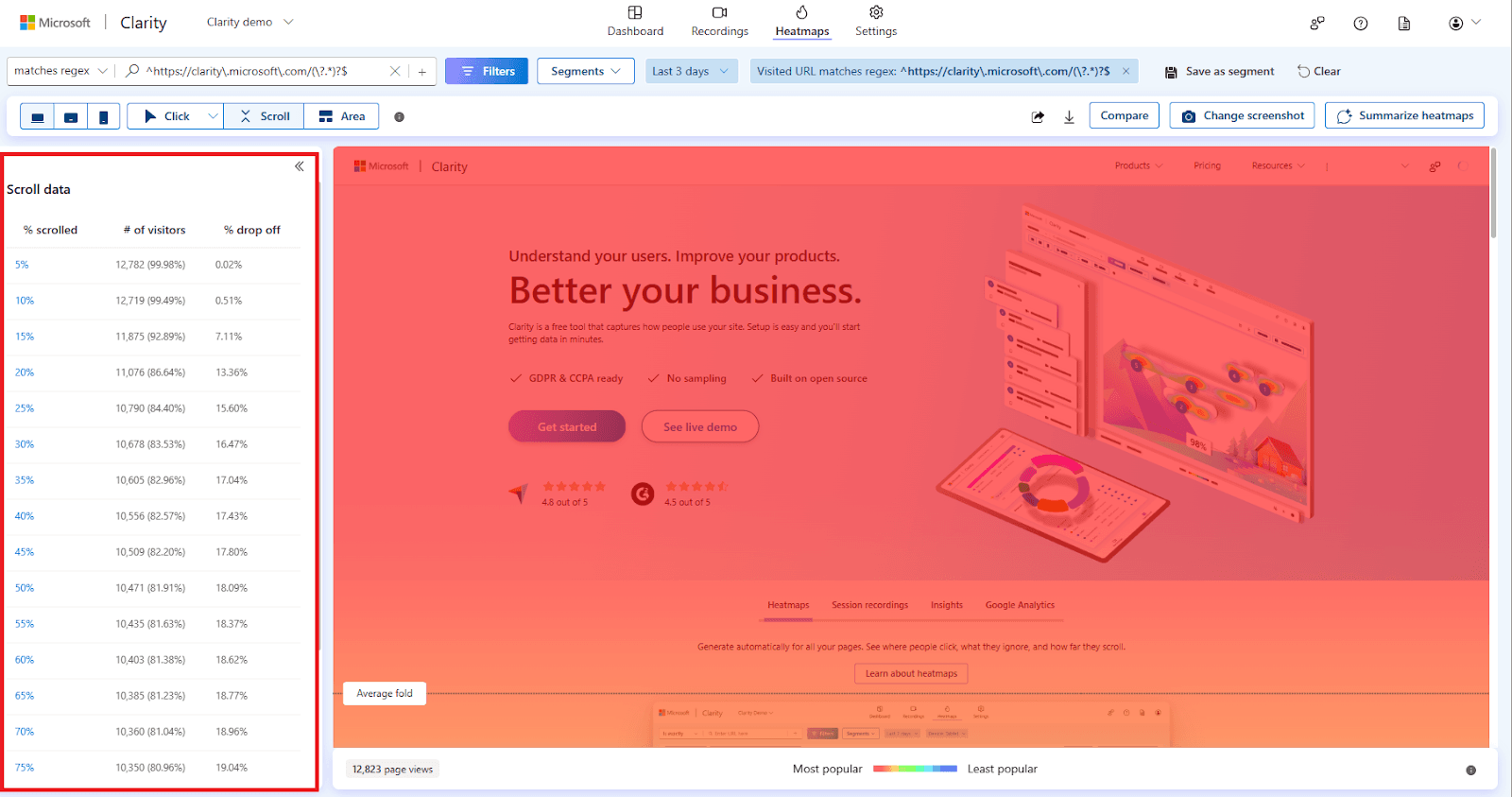Customer experience has been a hot topic in business conversations for over a decade. Customer expectations for CX quality are rising, and businesses are having to adapt in order to stay ahead of competitors.
The only manageable way to improve your company’s customer experience is by taking a scientific approach. You need to measure customer experience using specific metrics, analyze your findings, and find areas for improvement and growth based on those findings.
This article will teach you about the best practices of customer experience, as well as provide you with a short introduction to what customer experience is and why CX analytics is important.
What is Customer Experience Analysis
Customer experience can be somewhat hard to define. In essence, CX is the experience and feelings of the customer throughout their journey with your business. When interacting with your business, customers may feel frustrated, neutral, or positively impressed, whether it is when finding information on your website, communicating with you after the purchase, etc.
From the business side, providing a positive customer experience means trying to find and improve activities that might make customers feel inconvenienced or frustrated.
Working towards improving CX at your company isn’t always a cakewalk, however, it’s important for multiple aspects of your business, especially brand loyalty, which has a direct impact on your bottom line.
The expectations for CX are rising, and around 60% of consumers will switch to another brand due to bad customer experience. That’s why, according to the Adobe State of CX report, 85% of executives believe customer experience is a top business priority for their company.
Understanding the kind of customer experience your business provides can be tricky because few customers actually take the time to share their experience with you directly.
That’s why customer experience analytics is important for understanding what impression you leave on your customers. There are two main ways to get data on your CX: direct and indirect.
With direct data sources, you take feedback directly from customers, mostly in the form of surveys. The three most popular direct CX metrics are:
- Customer satisfaction score (CSAT)
- Net promoter score (NPS)
- Customer effort score (CES)
These metrics are straightforward to gather and analyze. You can also gather direct customer feedback from online reviews, social media interactions, support call transcripts, and open-ended questions in surveys. However, these are much harder to connect and analyze.
It’s also possible to understand CX dynamics indirectly. Regular business metrics like customer churn rate can be a signal that customer experience is lacking.
Bringing all of these factors together, finding causal relationships between points on the customer journey, and improving them is the process of customer experience analytics.
Practices for Effective Customer Experience Analysis
Customer experience is a challenging thing to analyze because you have to rely on both direct and indirect data, which is sometimes difficult to gather, which in many cases makes it difficult to find the reason for poor CX. Here are seven best practices of customer experience analysis to help you improve it in your organization.
Collecting VOC analytics data
VOC, or Voice of Customer analytics, is the process of gathering all customer feedback in one place and acting on it. Most often, this includes data gathered from direct interactions with customers, like surveys, customer interviews, and focus groups. It can also include indirect interactions like social listening.
The first problem you should handle before gathering VOC data is storage. To make analytics effective, you have to make sure that the multiple data points that you gather during the customer experience analysis are stored in one place, so it’s easy to cross-reference and compare them. Various analytics and reporting tools can help consolidate this data, making it simpler to generate actionable insights.
Another important thing to consider is providing customers with plenty of opportunities to share qualitative data. This means strategically asking the right open-ended questions. Primarily, you’re interested in learning about negative experiences that you can improve on.
In surveys, you can add open-ended questions after a customer gives a negative answer to a quantitative question. You might also add reassurance that the company apologizes for a negative experience and views it as a learning opportunity — this may entice more customers to spend their time writing answers.
Website performance analysis
Few customers will write openly about a mildly frustrating customer experience, like your website taking too long to load or it being too difficult to find something on it. With your website often being the first touchpoint with the brand and a primary source of information for placing an order, you want to analyze website performance and keep it in line with customer feedback and industry standards.
The first thing you can analyze on the website is ease of navigation, which is somewhat subjective. You can do it on your own with best practices in mind or with a focus group of customers. The main point of this customer experience analysis is to make sure the search works as intended and that finding products through category pages is intuitive.
The next step is making sure your website is in line with Google’s best practices and excluding any technical issues. You can do that for your whole website with a specialized tool like SE Ranking’s site audit tool. The audit will highlight problems with Core Web Vitals, which represent the quality of user experience, slow loading speed, high number of 404 pages, and other issues that translate directly into poor CX. It will also provide best practices for solving these problems.
Not all problems can be found with a web audit, though. For instance, this page is practically a 404 because it doesn’t have any content in it, but technically, it has no problems.

If you have a website that has hundreds of pages, checking each page manually will take too much time. You can use website usage metrics to infer potential CX issues.
For instance, a page that doesn’t have content in it probably has a huge bounce rate because customers see that it’s blank and exit it immediately.
You can also use heat maps or scroll maps to draw conclusions about customer experiences on different pages. These tools gather data on how many users scroll to the bottom of the page and how they interact with it.

NPS and CSAT data analysis
NPS and CSAT are among the most crucial customer experience metrics you can track. The hard part about them is that the score itself only tells you whether there is a problem, and not what the problem is. To make analytics possible, you have to improve the way to gather these scores in three major ways.
First, be precise with the questions. Ask not only whether customers are satisfied with your business in general, but how satisfied they are with key aspects of the customer experience. For instance, you could add questions about satisfaction with the product, navigation, and support. Although this makes the survey harder for customers to finish, it provides much-needed context to dissatisfaction.
Second, track these metrics across time. Historical data will help you understand whether your efforts to improve customer experience are working and might even help you find a cause. For instance, a rise in dissatisfaction after an update might signal that the update needs more work.
Lastly, make use of open-ended questions in these surveys. This is the most straightforward way to get feedback on what you might be doing wrong in terms of CX. You’ll have to start by going through the responses, grouping them, and then trying to find the cause for the most popular types of feedback.
Analyzing qualitative data means going through hundreds of responses, so it might be useful to use an AI to do this or outsource this work.
Tracking in-app customer behavior to identify patterns
If you have an app, or the app is your product, you have a wealth of information to tap into. Gather app usage data and try to find usage patterns that might lead to a bad customer experience.
The easiest way to do this is to serve CX surveys in the app and analyze customer behavior before leaving a negative score. The pattern might be the reason for the negative score, especially if it’s CES.
You can also identify common patterns and try to figure out whether or not they’re positive. For instance, a pattern of users spending a lot of time on a feature page and then going to the knowledge hub might indicate you either need a more intuitive control panel or better onboarding.
Using CRM and other sources
Customer experience analysis requires working with multiple sources, from surveys to general business metrics. The more data you gather, the better your understanding of CX issues will become, as you’ll have more information to help you find what caused those issues.
The most useful way to work with such a large amount of data is by storing it in a single place. A BI database might be the answer if you’re looking for data mining, but for many companies, simply using your CRM to store the data is enough.
CRMs themselves have plenty of data useful for CX analytics, such as ike call transcripts, and adding other qualitative data makes sorting through it easier. In more difficult cases, it can be useful to utilize data lake consulting.
Competitor analysis
You can’t possibly know what a competitor’s NPS or churn rate is, but you have access to two major sources of CX data on all of your competitors — online reviews and social media. Use these data sources to analyze what consumers berate and thank the competition for. Tools like Apify, which let you scrape social media data, let you gather info fast.
This can give you more ideas for things to avoid and strive for. But you should only use competition analysis for generating new ideas, and not just for following feedback from somebody else’s online reviews. It’s important to consider your differences and focus on whether following these ideas can benefit your business and your customers.
Measuring progress and adjusting strategy
As with many other business improvements, analyzing customer experience and improving on it is a long process that you have to measure at every step.
You should track general CX metrics like customer satisfaction score and net promoter score across time to see how effective your efforts are at improving customer experience. You should also scrutinize and improve your methods of gathering data to make them more reliable.
For instance, you could experiment with how you involve customers in surveys, how you phrase questions, or with adding questions on different aspects of your business. Using a CX tool can really help here. It gives you a central place to collect and analyze customer feedback quickly and easily. This helps you make smarter decisions to keep improving the customer experience.
How to Use Data from Customer Experience Analysis?
While gathering data and transforming it into a measurable improvement of your business, there is a high-quality customer experience analysis. Here are some of the most important tips for analyzing customer experience.
The main thing to consider is that sometimes measuring CX metrics can produce false positives that prevent your company’s growth. This can happen if you don’t invest much effort in measuring metrics like customer satisfaction scores, get overall positive scores, and falsely think you’re doing great.
To avoid this, don’t just measure the core metrics. Try to treat CX analytics as a search for growth opportunities and look for data that can help you with that instead of simply doing surveys once in a while.
Another common mistake is fixing the common problem instead of its cause. To avoid this, try to dig deeper into why problems arise and fix systemic issues after you handle the more pressing ones. You should also use other data you have available to provide context to customer feedback.
For instance, if you find that some customers complain that they receive too many promotional emails, it doesn’t mean you should cut back on email marketing immediately. Check email marketing metrics. If they show good results, you might need to segment the email list better and either send fewer emails to people who aren’t interested or find a better channel of communication with them. Additionally, using email tracking software can provide more insights into how your emails are being received and opened, helping you make more informed decisions.
You should also be cautious about applying any and all customer feedback. You should only follow feedback when you think implementing it will benefit both your company and your customers, and if it is feasible at the moment.
The best part about customer experience analytics is that you receive a lot of insight into customer needs and preferences when doing it. You can then use this knowledge in other areas of your business, from building better customer personas and customer journey maps to making your marketing efforts more personalized. If you’re unsure how to interpret or act on your analytics, consider professional customer experience consulting to help turn insights into strategy.
What This Means for You
Customer experience analysis is a complex task, but your efforts will pay off. Not only will you improve CX and brand loyalty, but you’ll also gain a better understanding of your customer base.
Analyzing customer experience and making changes to improve it ensures consumers choose you over the competition in the market, where small interactions are becoming increasingly significant.













